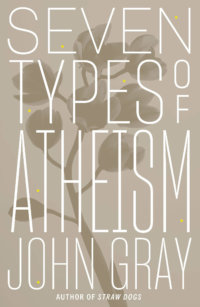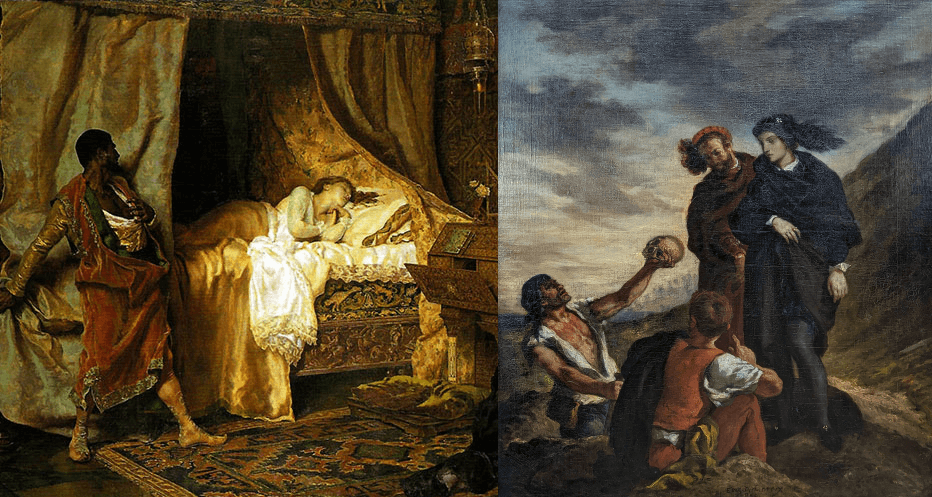In Defense of Gray: Reply to Sean Haylock’s Review of John Gray’s Seven Types of Atheism

John Gray evokes a greater existential threat to contemporary Christianity than any of the avowed Atheists. Not only because the avowed Atheists, such as Richard Dawkins and Sam Harris, have in recent years become caricatures of themselves. Gray’s work, in contrast, attacks Christianity’s most indispensable illusion. Christianity has shown it can survive the metaphysical death of God, the decline of institutional religious authority, and still thrive. Neither Christianity nor atheism, on the other hand, can survive the death of humanism. Sean Haylock’s critique of Gray’s work reflects some of the terrain of this last stand.
I too was underwhelmed by Gray’s Seven Types of Atheism. It felt to me mischievous but in a joyless way. When Gray explains his choice of title and methodology – in reference to Empson’s Seven Types of Ambiguity – the reader’s suspicion should be aroused. There are not “types” of atheism, there are not seven of them, and like Empson’s view of language, Gray’s view of atheism is that there is no way to specify or assign it a discrete meaning. Atheism is better understood in Gray’s hands as a metaphor for the way human beings misunderstand themselves and the world – a central theme of much of his post-1995 work. Gray’s intention is for the reader to apply this heuristic to his own views too. He seems genuinely uninterested in explaining to his audience his own stance. This is no subtle evasion as Haylock suggests. If there is no atheism to define, what is the point of defining one’s stance toward it? Gray is a self-declared nominalist. He has carved out a worldview in which philosophical, let alone theological, debate has given way to a type of quietism. Ultimately, its this quietism that theisms of any kind, secular or religious, cannot abide. Gray often seems to triggers a reflexive defensiveness which searches, and often finds, plenty to whack him with. It can just seem a bit pointless.
Seven Types of Atheism only shades the heights reached by Gray’s previous work, most notably the sublime The Silence of Animals, when discussing in chapter six Joseph Conrad and the godless sea. Those truly interested in John Gray’s own personal stance will find him somewhere here unstated. As will they find a deeply compassionate man in love with the world of Nature. And contrary to the pessimistic ectype all-too-many people succumb to, a man in love with the world of human beings. The book’s other chapters include content as well or better engaged with in Gray’s back catalogue. As with any prolific writer, it is impossible to consider any one piece of work as a standalone item. Anyone reading Gray without a grounding in, at a minimum, his 1995 landmark Enlightenment’s Wake is doing so absent a lot of important context. If, as Haylock finds in Gray a number of “bald, and sometimes bewildering, assertions” this is mostly the cause. Haylock’s critique is valid – just not for those reasons. This is clearly not Gray’s first “foray into the genre” of atheism. In fact it is mostly an unnecessary digging up of old bones, with lots of things left buried.
Haylock objects to several of Gray’s burials, many of which reflect the divide over humanism. In part I, Haylock rebuts the claim that the repressed sexuality of the Christian creed is unnecessarily doctrinal by observing that Christians derive a moral compass on sex from “the demands that our createdness and the Fall, and indeed the incarnation, place on us.” That religious doctrine worth following can emerge from the conviction of lived experience filtered through timeless religious text is a form of humanist teleology. Christians making a Procrustean Bed of Jesus’ apparent teachings is an extravagant example of the many uses for rationalism, and a core feature of both Theism and Atheism. It has little to distinguish it from the way secular scientific method, which as Latour has shown is nowhere universally uniform, is used nonetheless to justify and legitimize all manner of humanist scientisms today.
Nevertheless, Haylock claims the move from conviction to creed is unavoidable in human affairs, and directs this assertion at Gray’s nominalism (whether it is announced or implied). He asserts Gray must make a claim on preferable ways of life since he makes a claim on those less preferable. And given the abundance of examples and potential evidence where rival claims will be matters of great import, we will find ourselves inevitably choosing between rationalities, making it “impossible to equivocate and maintain moral credibility.” Its on the basis of this schema that Haylock goes on to describe Gray’s nominalism as an affectation masking doxaphobia – a fear of stating his view. I must admit I never thought I would hear anyone accuse Gray of that. It’s the architecture of moral credibility that is the object of dispute here, and the point of departure between humanism, its rationalist and teleological underpinnings, and nominalism. Haylock is staking Christianity’s claim on the shifting sands of ‘moral logic’ – Gray is content to be subsumed.
Curiously, in part II, Haylock finds himself lauding Christianity for something close to nominalism while rejecting Gray’s ‘relativism’ – “it (Christianity) caters in a single stroke both to our need for objective order and to our awareness of ourselves as historically situated subjects.” One wonders if there is anything Christianity can’t do. How exactly it achieves this for a majority of Christians today, without shedding its very identity, is left unstated. Haylock thinks Gray has overlooked Christianity’s capacity to reinvent itself. In his previous work Black Mass, however, Gray notes how the revolutionary eschatology which marbled early Christian thought was tamed by Augustine. It was via Augustine’s insistence that apocalyptic expectations be designated a world beyond normal human affairs that Christianity’s most volatile elements were calmed. If Christianity were as revolutionary as Haylock is suggesting, it would never have survived. Augustinian doctrine probably saved the day. He is again overplaying what is a Procrustean teleology.
Haylock deploys what he intends as an ethical puzzle to trip Gray’s “relativism.” The murder of the missionary John Chau by North Sentinelese tribesman is supposed to present the fatal flaw. Should the North Sentinelese feel remorse for killing Chau? If not, how are we to make any moral sense? “The onus is on Gray to show that our apprehension of the innate preciousness of human life is the product of an ethical postulate rather than vice versa, that the ethical core of humanism is a deontological conjuring trick.” Haylock acknowledges his own assumption “that one unassailable moral fact is the sanctity of human life.” On display here is a Christian stance that Gray assailed in The Soul of the Marionette. The sanctity of “moral facts” about human life as a cornerstone of human flourishing does not fit with the many ways humans have flourished throughout history. Gray explored how Aztec culture provided purpose and meaning to its participants while operating under a radically different metaphysical and existential settlement to that of modern Christianity. In no doubt of the barbarism of Aztec life, Gray nonetheless showed how even our most basic assumptions about human life cannot be considered unassailable. This is to say nothing of Christianity’s own violent past in which human life has been sacred, in practice, only selectively.
Haylock says that Gray’s nominalism has been purchased at an exorbitant price. On this we can agree. Gray is unsparing in forcing us to stare at the abyss, and it is not without its costs. Haylock makes his best point here. It does seem that neither the moralists nor the often dark scarcity of Gray’s offerings is enough to sustain us, given the extant fragility of human consciousness. “What’s required here is an ethic that can hold justice and charity in balance, the kind of ethic that’s concerned not with exonerating murderers but with forgiving them.” Haylock thinks the Christian myth supplies this ethic. But do we need humanism to do this? Or is there another way? Can humans live with murderers, torturers, and rapists in their midst and in themselves and still hope to deny the void without creating self-defeating fictions?
Part III of Haylock’s critique includes from the outset another example of reading Seven Types in isolation. Haylock claims Gray has mistaken Genesis as an allegory when it is better understood as a myth. Gray, in fact, has elsewhere repeatedly referred to the Genesis myth as superior to many other modern forms of knowledge-making in its capacity to convey indiscrete and transient meaning – truths about human life only captured in glimpses, impressions, and stories – the way only myths can. Gray has explored the reasons why humans cannot live without myths, in The Immortalization Commission, Black Mass, Straw Dogs, The Silence of Animals, The Soul of the Marionette, and others. When Haylock asserts of Genesis “it is the primordial narrative because it pictures in a singularly uncomplicated and pristine way the painful embedding of human action within moral causality” I imagine Gray agreeing wholeheartedly.
Haylock ends by attacking Gray’s concerted attacks on “the myth of progress,” citing how the word “myth” gets caught in the cross-fire of political and religious critiquing. I think this is a bit too technical. Gray has been clear enough. Modern political ideologies, which include ideologies of progress, are vehicles for persistent yet volatile religious myths. When political ideologies transmitting ancient myths converge with regime violence, extraordinarily destructive forces are unleashed – no better example than the 20th century exists. Gray has spent a career pointing out the deeply unsettling truth that these paroxysms have not been stilled by Enlightenment secularism nor by the avowed meliorism of liberals. When combined with the relentless march of modern technology, the threat they still pose is massive. We can concede the fact that humans can’t do without myths, but some of them make human life much worse than it needs to be. Our job is to try to discern which myths are worth discarding. Unless, like me, you glimpse in Gray’s work a nominalist alternative to humanism of immense richness, he can be devastatingly bleak. This is fair enough. But he has paid his dues for pointing out the things almost nobody wants to know, and he is not waiting to be thanked. (Apparently Gray’s next book is about Cats!)
Humanists of both the secular and religious variety are deploying an Aristotelian plot structure to the narrative of human lives which is neither universal nor fundamental. As Heidegger thought, there are many ways of being in the world. Humanists do not have exclusive claims on the plot structure of hope. The Greek-Judean-Christian underpinnings of western culture strain against a centrifugalism brought on by modernity and the iconoclasm inherent in technology. There is no way back to Aristotle. Better to let the centrifugal force engulf our epistemology. As Paul Ricouer thought, a good life lived among other people will always be the life of a person. But an Aristotelian plot structure has become too confining for contemporary circumstances. If there is a way forward for western culture it resides somewhere between humanism and nominalism, with not too much of either, as shown by Ajit Maan in her theory of inter-narrative identity. (As an aside, finding this path will be critical in the digital age if people are to escape the Church of Google. The Aristotelian plot of human life gives critical structure to the digital mush we all now emit. Google plans to sell us back our digital mush as Aristotelian life plans. Escaping Aristotle might mean escaping the engineers at Google.)
For Christianity, any scalable moral certainty emerging from Jesus’ teachings, however they are interpreted, is now an unrecoverable relic of a time past. Gray is right to show us this. If he offers us nothing further he is teaching us a harsh but important lesson. Our myths need us as much as we need them. When we outpace and out-develop them there is no way back.
Sean Haylock’s essays on John Gray are available here: part one, part two, and part three.




